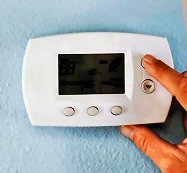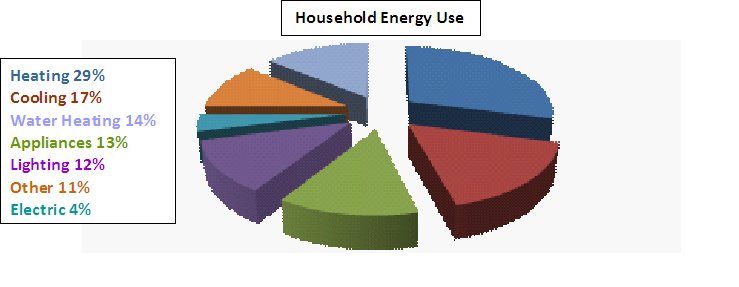Energy Savings Tips
Consider replacing older, drafty, or broken windows with new ones that are more efficient; use double pane, low-E, energy-efficient windows. Prioritize replacing those in the worst condition first, as well as those on the south & west sides of the house, which get more exposure to winds and weather.
Use caulk and/or weather-stripping around windows and doors to seal out drafts, keeping caulk in good repair.
Use blinds and/or curtains to insulate against drafts in the winter and to help keep the house cool in the summer by blocking the sunlight.
Ceiling fans can help ventilate rooms and avoid the need for air conditioning. In the summer, air flow from the fan should direct down. The reverse setting is recommended in the winter, which can be particularly helpful with high ceilings.
Putting an extra blanket on the bed on cold nights can allow you to set the thermostat at a lower temperature, saving energy.
To be comfortable and control heating costs, dress warmly in the winter utilizing layers (even when indoors). In warmer months, choose lightweight, light-colored, loose-fitting clothing and a hat.
Change furnace filters once a month to promote efficient operation; or to reduce waste, buy a reusable one that can be cleaned. Have furnaces inspected once a year and as problems arise.
Perform regular maintenance on HVAC (heating, ventilation, & air conditioning) and refrigeration systems; or if you rent, ask our landlord to do so. Consider replacing older models with new higher efficiency models. Adjust temperatures when you won’t be home - programmable thermostats are helpful for this.
Install a programmable thermostat, setting it to 68 degrees in the winter (55 degrees at night or when away from the home) & 78 degrees in the summer. Check the Columbia Gas Energy Efficiency programs for rebates on programmable thermostats, home energy audits, appliance rebates, income based weatherization and more.
Protect against freezing temps and prepare your water lines for cold weather. Learn More...
Water heating is the third largest energy expense in your home. It typically accounts for about 14% of your utility bill. See chart below. Insulate your electric hot-water storage tank and pipes, but be careful not to cover the thermostat. Insulate water heaters with a tank blanket available at hardware stores.
Lower the thermostat on your water heater, setting the temperature no higher than necessary. Water heaters sometimes come from the factory with high temperature settings, but a setting of 115 degrees Fahrenheit provides comfortable hot water for most uses.
Buy a new energy efficient water heater; at replacement time, look for Energy Star models. For more efficiency, consider on-demand models, which heat water as it is used instead of keeping it hot. Solar powered water heaters are also available. And although most water heaters last 10-15 years, it's best to start shopping for a new one if yours is more than 7 years old.
Recommendations for attic insulation have changed over the years. Experts say if you can see exposed rafters, add more insulation. Contact a professional for advice.
Using a fireplace can allow you to turn down your furnace thermostat in the winter. Have fireplaces inspected annually and cleaned as needed.
Keep chimney flue closed when fireplace is not in use. Lock-top chimney caps can be installed to prevent cold air from coming down the chimney.
